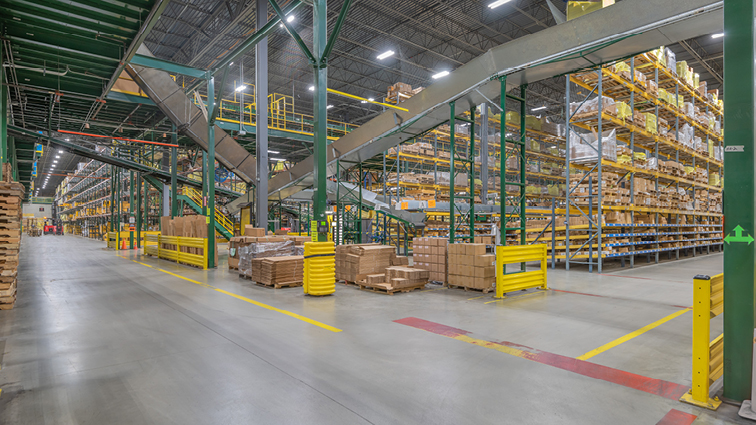Three Ways Supply Chain Disruptions are Impacting the Commercial Real Estate Market
Rising demand for warehouse space, re-shoring and last-mile logistics among the biggest trends
The emergence of the coronavirus in early 2020 caused a drastic slowdown in supply chains across the globe. Labor shortages, fluctuating consumer demand, disruptions in shipping lanes, COVID-19 restrictions as well as general economic uncertainty caused major disturbances in the flow of goods. The war in Ukraine further compounded these issues by cutting off the supply of critical raw materials and ratcheting up energy costs. These disruptions have caused several challenges and opportunities for commercial real estate as the industry focuses on restoring the reliability of the global supply chain. Here are three of the most significant impacts:

Rising demand for warehouse space
During the pandemic, many companies struggled to restock in-demand products driven by a steep increase in online orders amid global lockdowns. Once lockdown restrictions loosened, this led to an “inventory bullwhip effect” as companies over-purchased merchandise to avoid future inventory shortages. Sustained supply-chain bottlenecks led retailers to continue over-purchasing—shifting from “just-in-time” inventory management to a “just-in-case” model in an effort to keep more inventory onsite. As a result, the demand for warehouse space skyrocketed.
The impact of this rising demand is significant. On one hand, warehouse sellers can get a significant premium for their property if they pursue a sale-leaseback of their real estate. However, companies looking to acquire or rent warehouse space might have a difficult time as vacancies are at record lows—for U.S. industrial properties it’s just 4.1%. Supply chain disruptions causing delays in construction materials also increase the build time for new warehouses, meaning many companies are left waiting several years for the space they need to accommodate today’s surging retail inventories.
From an investor perspective, rising demand often translates to low cap rates for well-located warehouses despite inflationary pressures and rising interest rates. However, the shortage in available space also enhances the criticality of these properties to tenants, making them less likely to vacate at the end of the lease term.
Re-shoring supply chains
Supply chain disruptions highlighted the risk of off-shore operations for many manufacturers. As a result, many manufacturers are making the decision to re-shore their production facilities to protect against such disruptions in the future. In fact, in 2021, a record 1,800 companies re-shored their production operations in the U.S.
Companies looking to re-shore production are choosing locations with a high availability of land for development, a large pool of skilled labor and well-developed transportation infrastructure including railways and ports. This has led to an increase in development in the Midwest and South due to both regions’ access to rail infrastructure and seaports respectively.
While re-shoring has contributed to the rising demand for warehouse space, it has also opened up new opportunities for investors as companies look to rent existing warehouses in tertiary markets that may not have historically been attractive, but have access to transportation infrastructure and land available for development.
Increased interest in last-mile logistics space
With limited warehouse space available, companies are having to get creative with their distribution strategies. One such method is through last-mile warehouses, which facilitate the movement of goods in the supply chain to the final destination. These warehouses are typically located close to the consumer and therefore decrease supply-chain costs while minimizing delivery time. As a result, warehouses situated near major highways and bridges that lead into metropolitan hubs are becoming highly in-demand for companies looking to make their distribution network more nimble. This presents an opportunity for investors who own these types of facilities to capitalize on demand and secure high-quality tenants on long-term leases.
Related Topics:
You May Also Like:

- Recently Added
- WPC in the News
Sale-Leaseback Activity Expected to Grow as Capital Conditions Improve in 2026
After a slow start, sale-leaseback activity saw a resurgence in the second half of 2025. Early in the year, activity was dampened by uncertain fundamentals and macroeconomic headwinds, but...
- Recently Added
- Thought Leadership
From Volatility to Resilience: Net Lease Real Estate in 2025
2025 marked a turning point for the net lease real estate market, driven by three defining trends: interest rate relief, cap rate stabilization and an increased focus on mission-critical assets....